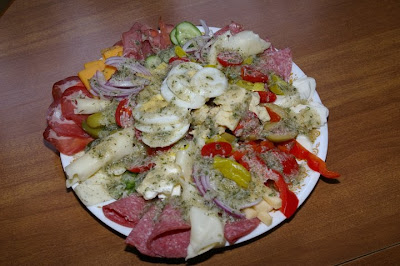When I went out to the garden a couple of days ago, to my delight I found a bunch of carrots ready to pick! Since it was too much to eat all at once, I decided to can most of them. This post is going to be a step-by-step guide to canning carrots!
Picking the carrots (I found a few other items as you can see!).
My copy of the "Balls Blue Book of Canning" is dog-eared and worn, but I use it every year and love it.
We will be raw packing the carrots today.
I "top" the carrots with a pair if scissors (or you could use a knife). Then I washed them (not pictured).
Slicing off each end of each freshly-scrubbed carrot. Aren't they beautiful?
Since these carrots were a bit bigger, I peeled them. When I can small carrots I usually don't bother to peel them.
Then, I use my mandolin to slice them uniformly.
Then, I used my handy-dandy canning funnel to pack them into hot, clean, sanitized jars (easy to do by running the jars through a cycle in the dishwasher or having them waiting in boiling water). When packing the carrots, I make sure to leave one inch of headspace (headspace is the distance from the food to the bottom of the lid, and allows the food to expand slightly as it cooks. The proper amount of headspace allows a vacuum to form, which seals the jar - too much or too little headspace causes problems).
Some filled jars.
I use canning and pickling salt because regular table salt can cause cloudiness at the bottom of the jar.
At this time, get your lids in a pan of hot-but-not-quite boiling water. The rubber needs to soften to help ensure proper sealing.
Pour boiling water over the carrots, making sure to leave about one inch of head space. Sometimes you have to use a butter knife or squeegee to run along the inside of each jar to remove air bubbles.
Then, add 1/2 teaspoon salt to each pint (1 teaspoon to each quart) and wipe the rim of each jar (very important to make sure there aren't any impurities on the rim which could cause the jars to not seal).
Then, take your hot lids and "adjust the two-piece caps." This just means to put the lid on, and finger-tighten each ring.
Set them in your pressure canner - as you can see, they are close, but try not to let the jars touch. Since carrots are a food low in acid, they must be pressure canned rather than canned in a water bath.
I use my great-grandma's old pressure canner, which is such a gift for me to have. This is the pressure canner I have been using since I was a young teenager. I tend to have great respect when I am pressure canning and make sure to stay fully concentrated on monitoring the canning process, as I don't want the canner to explode! Anyhow, the lid is locked in place and we are ready to apply the heat. Let steam come out for about 10 minutes (this purges the air from the inside of the canner).
After 10 minutes, close the valve and bring the pressure up to 10 pounds. Watching carefully (!) hold the pressure at 10 pounds for 25 minutes. When she was first teaching me how to use the pressure canner, my Grandma Lois handed me a deck of cards and said I needed to play a game of solitaire and watch the canner very closely! I never have forgotten that lesson.
Let the canner rest until the pressure starts to drop. Then, let the steam out (on my canner I twist that little stopcock to open). I open it just a little bit at first, and gradually open more. After there is no steam coming out, I remove the canner from the heat and let it sit for about 10 minutes.
The finished carrots! Canned, ready for the shelf and ready to enjoy in the cold of winter! Thanks for stopping by today - and go can some carrots! Please feel free to ask questions, and I will try to help!
























































